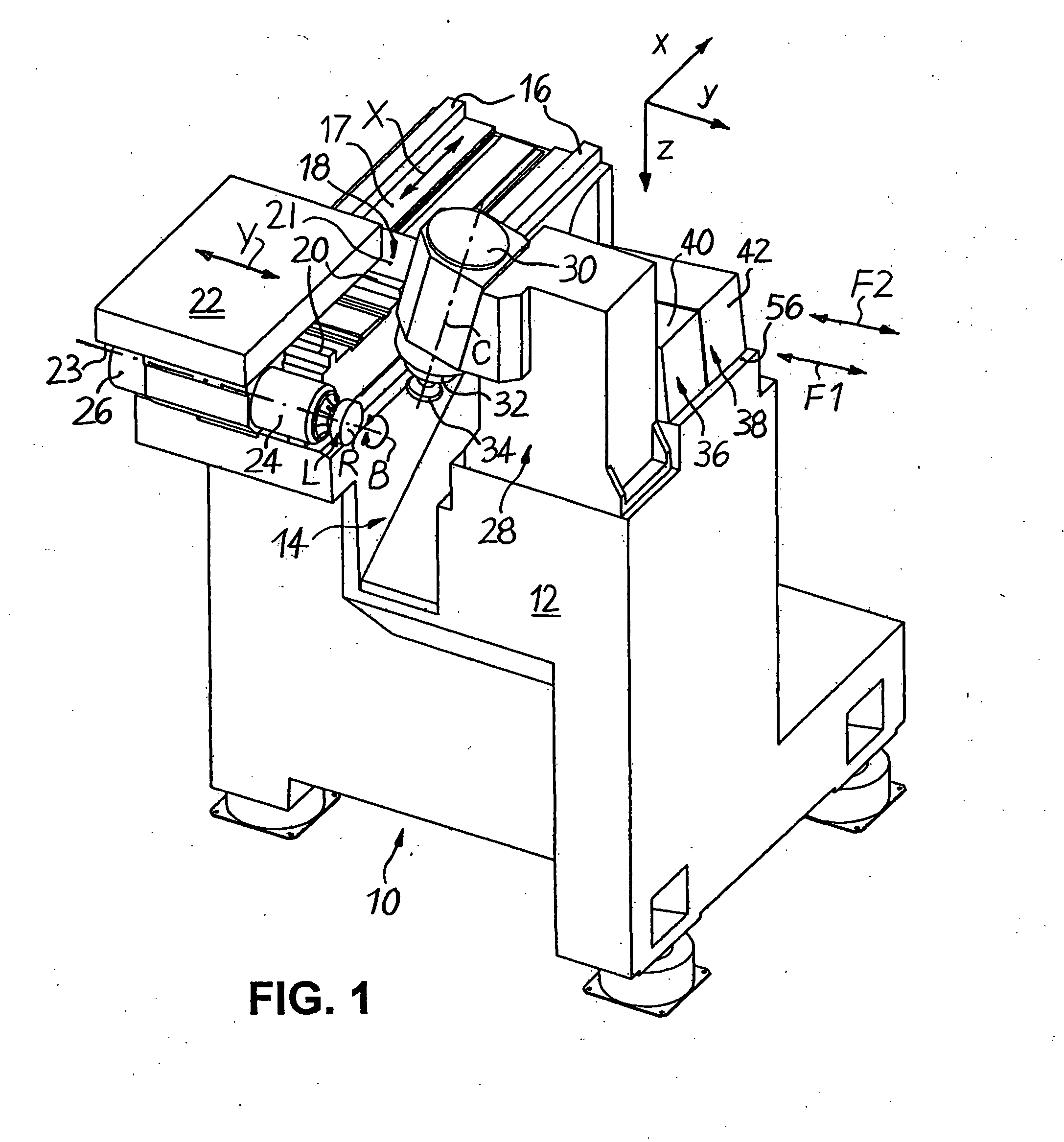Machine for machining optical workpieces, in particular plastic spectacle lenses
a technology for optical workpieces and plastic spectacle lenses, which is applied in the field of plastic spectacle lenses, can solve the problems of undesirable “ageing” or “fading” of engraving images
- Summary
- Abstract
- Description
- Claims
- Application Information
AI Technical Summary
Benefits of technology
Problems solved by technology
Method used
Image
Examples
Embodiment Construction
[0027] FIGS. 1 to 5 show, in schematic representation, a CNC-controlled machine 10, in particular for the surface machining of spectacle lenses L made of plastic in a rectangular Cartesian co-ordinate system, in which the lower-case letters x, y, z designate the latitudinal direction (x), the longitudinal direction (y) and the elevation direction (z) of the machine 10. The machine 10 as such, without the engraving function, was described in prior German patent application 10 2005 021 640.4 of the same applicant.
[0028] According to FIGS. 1 to 5, the machine 10 is equipped with a machine base 12, which defines a machining area 14. Affixed on a (in FIG. 1) upper mounting surface 17 of the machine base 12, to the left side in FIG. 1 of the machining area 14, are two guide rails 16, which extend parallel with one another in the (horizontal) latitudinal direction x. An X-slide 18, which is adjustable, under CNC positional control, in both directions of an X-axis by means of assigned CNC ...
PUM
| Property | Measurement | Unit |
|---|---|---|
| Angle | aaaaa | aaaaa |
| Angle | aaaaa | aaaaa |
Abstract
Description
Claims
Application Information
 Login to View More
Login to View More - R&D
- Intellectual Property
- Life Sciences
- Materials
- Tech Scout
- Unparalleled Data Quality
- Higher Quality Content
- 60% Fewer Hallucinations
Browse by: Latest US Patents, China's latest patents, Technical Efficacy Thesaurus, Application Domain, Technology Topic, Popular Technical Reports.
© 2025 PatSnap. All rights reserved.Legal|Privacy policy|Modern Slavery Act Transparency Statement|Sitemap|About US| Contact US: help@patsnap.com



